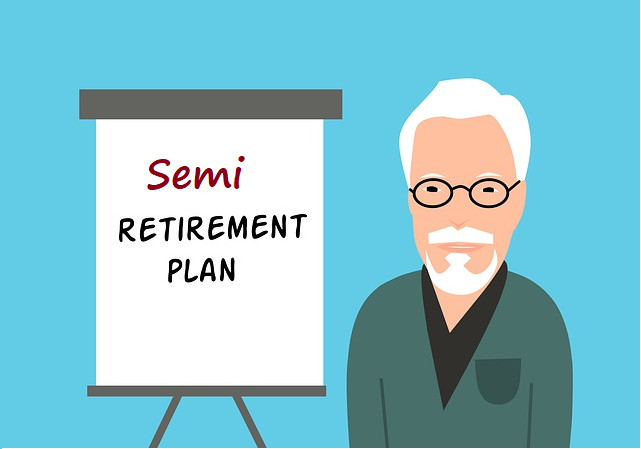
Easing into Retirement - Flexibly
Flexible retirement, also known as gradual retirement, semi-retirement or phased retirement, is where instead of leaving the workforce in one fell swoop, people transition to fewer hours or move to other roles which may have reduced responsibility, be more fulfilling and possibly lower paid.
Flexible retirement is essentially an agreement between employer and employee on their work pattern in the lead up to full retirement. Options include moving to fewer hours whilst keeping some pay and benefits or beginning to withdraw retirement benefits.
In the UK some organisations do already allow flavours of flexible retirement. The NHS for example allows options including stepping down to a different role, winding down the number of hours worked, retiring and returning, drawing down to take part of their pension benefits whilst still working, late retirement and early retirement.
In the education sector, phased retirement for teachers over the age of 55 was introduced as far back as 2007 to allows teacher who reduced their earnings by going part-time to be able to substitute the lost income by withdrawing from their pension.
Flexible retirement in the corporate world, however, appears to be lagging behind.
With the current skills shortage and the increasing exodus of over 50s from the workforce, the case for flexible retirement is one all employers would be well served to consider.
For those who wish to ease off the fulltime work pedal there are other opportunities including freelancing or becoming trainers, coaches and mentors.
At Flexpertae this demographic is an essential part of the equation in our vision for reimagining consulting. With a wealth of experience, the wisdom of age, and with Generation X being unique in their experience pre and post technology revolution this demographic is one businesses ignore at their peril.
Benefits for organisations
- Talent and knowledge retention, especially in times of skills shortage
- Opportunities for knowledge transfer
- Opportunities for coaching, mentoring and training of junior staff
- Allows time for well-planned succession planning reducing the stressful handovers
- Intergenerational care, where generations at work help each other
- Positive way to manage an ageing workforce
- Slow down the brain drain
- Gradual transition to full retirement thus reducing risk and tight handover timelines
- Happier, healthier employees leading to a positive work environment
- Reduced costs whilst retaining invaluable tacit knowledge and experience
- Less competitive people who are comfortable, if not keen, to pass on their earned wisdom
Benefits for individuals
- Financial security with ongoing income
- Keep growing your savings
- Easier to adapt to retirement
- Reduces sudden sense of loss in terms of relationships, identity and purpose
- Easier to adapt to having more time on your hands and how to fill your days
- Psychological benefits including remaining involved, and part of the work community
- More personal and family time
- Delayed/reduced use of the pension pot
One key aspect of flexible retirement is the psychological benefits for the individual. Moving from a full-time job to full retirement can be a shock for many - going from constantly busy to having too much time on their hands, from being part of a community of co-workers to suddenly no longer belonging to that community, from a sense of purpose to a loss of purpose. For many the sharp transition can be difficult to adapt to resulting in loneliness, low self esteem and boredom.
Intergenerational care hasn’t yet made it into the workplace, however flexible retirement offers the ideal opportunity to introduce it helping to reduce those feelings of loneliness, loss of community, and staying occupied – both physically and mentally. For more junior workers intergenerational care would provide them with hands on training and mentoring, as well as improved communication skills and knowledge sharing.
How can organisations afford and adapt to flexible retirement?
- Mindset change
- Understand the roles their older workers have and how they can be broken down
- Manage as part of succession planning
- Have a flexible working policy for flexible retirement
- Individually tailored flexible retirement planning
- Consider legal and pension issues relating to flexible retirement
- Consider creating or replacing training courses with hands on training by older workers, their voice of experience
Flexible retirement is not without its challenges, and people would need to seriously consider their finances, earnings and how much they’d want to delve into their retirement funds before making life changing decisions. It does offer an alternative for people who wish to wind down slowly whether it be for health, family or work/life balance reasons. It’s also an option for those who might be dependent on state resources if they were to fully retire.
In a survey of world-wide HR executives by Mercer LLC, approximately 38% reported that they offered phased retirement compared to 17% prior to the pandemic.
Whilst more organisations are now considering formal flexible retirement programs, it will require clear definitions with respect to eligibility, duration and impacts to benefits such as health coverage and pensions. It’s no small feat to implement though don’t let this deter you, there are great positives to be reaped.
Overall though flexible retirement does appear to have more pros than cons and presents a promising way to address many of the challenges of the post pandemic world of work where work life balance has become a major factor for people of all generations.
Blog article by: Zahida Posted: November 2022